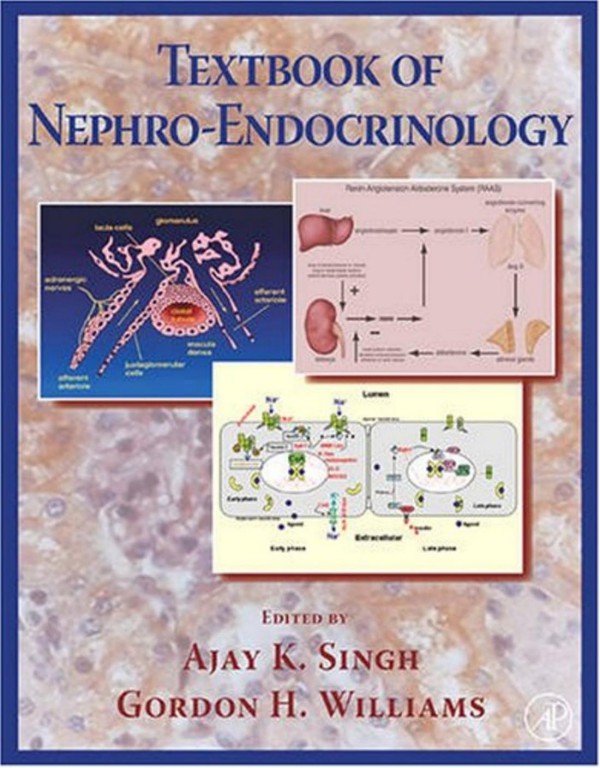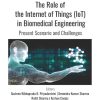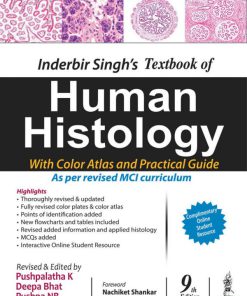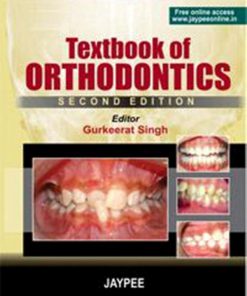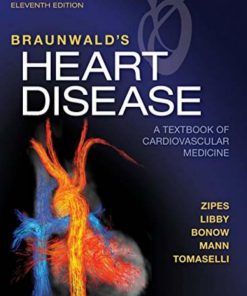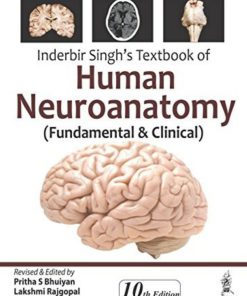Textbook of Nephro Endocrinology 1st Edition by Ajay Singh, Gordon Williams ISBN 0123738709 97
$50.00 Original price was: $50.00.$25.00Current price is: $25.00.
Authors:Unknown , Author sort:Unknown , Published:Published:Feb 2009
Textbook of Nephro-Endocrinology 1st Edition by Ajay K. Singh, Gordon H. Williams – Ebook PDF Instant Download/Delivery. 0123738709, 978-0123738707
Full download Textbook of Nephro-Endocrinology 1st Edition after payment
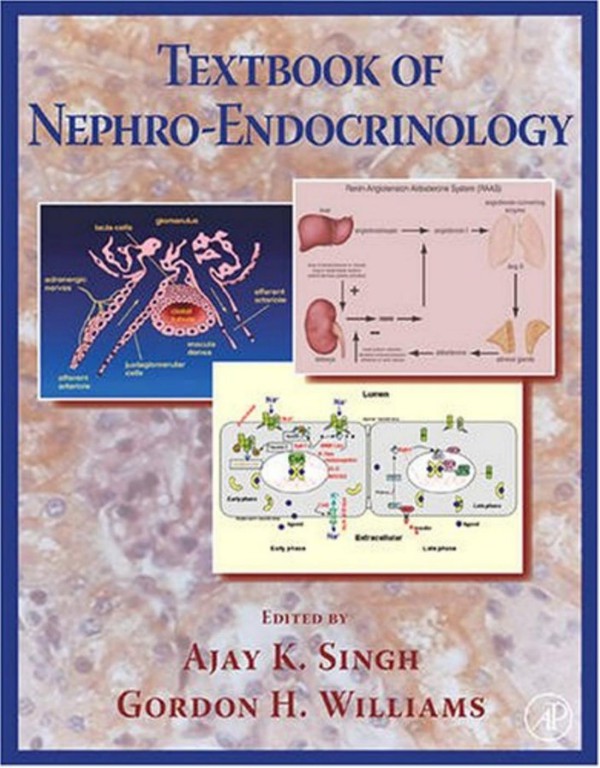
Product details:
ISBN 10: 0123738709
ISBN 13: 978-0123738707
Author: Ajay K. Singh, Gordon H. Williams
The Textbook of Nephro-Endocrinology is the definitive translational reference in the field of nephro-endocrinology, investigating both the endocrine functions of the kidneys and how the kidney acts as a target for hormones from other organ systems. It offers researchers and clinicians expert, gold-standard analyses of nephro-endocrine research and translation into the treatment of diseases such as anemia, chronic kidney disease (CKD), rickets, osteoporosis, and, hypoparathyroidism.
- Investigates both the endocrine functions of the kidneys and how the kidney acts as a target for hormones from other organ systems
- Presents a uniquely comprehensive and cross-disciplinary look at all aspects of nephro-endocrine disorders in one reference work
- Clear translational presentations by the top endocrinologists and nephrologists in each specific hormone or functional/systems field
Textbook of Nephro-Endocrinology 1st Table of contents:
PART I: THE KIDNEY AS AN ENDOCRINE ORGAN
Section I: Erythropoietin
Chapter 1: Erythropoietin: An Historical Overview of Physiology, Molecular Biology, and Gene Regulation
- I. Introduction
- II. Hormonal Regulation of Erythropoiesis
- III. Identification of the Site of Erythropoietin Production
- IV. Assays of Erythropoietin
- V. Isolation and Characterization of Erythropoietin
- VI. Erythropoietin Effector Mechanisms
- VII. Regulation of Erythropoiesis by Hypoxia
- VIII. Regulatory Elements of Erythropoietin (EPO) Gene
- IX. Erythropoietin – The Paradigm for Gene Regulation by Hypoxia
- X. Hypoxia Inducible-Factor (HIF)
- XI. The Elusive Nature of the Oxygen Sensor
- XII. Degradation of HIF by the Ubiquitin-Proteosomal Pathway
- XIII. Disruption of the Oxygen-Sensing Pathway in Cancer
- XIV. Disruption of the Oxygen-Sensing Pathway in Hereditary Polycythemia
- XV. Pharmacological Manipulation of HIF
- XVI. Summary
- References
Chapter 2: Erythropoiesis: The Roles of Erythropoietin and Iron
- I. Erythropoiesis: An Overview
- II. Role of Erythropoietin in Erythropoiesis
- III. Role of Iron in Erythropoiesis
- References
Chapter 3: Extra-Hematopoietic Action of Erythropoietin
- I. Introduction
- II. The EPO Receptor (EPOR)
- III. Regulation of EPOR Expression
- IV. Action of EPO
- V. Mechanisms of EPO Action
- VI. Summary
- References
Chapter 4: Development of Recombinant Erythropoietin and Erythropoietin Analogs
- I. Introduction
- II. History of Recombinant Human Erythropoietin
- III. Biosimilar EPOs
- IV. Potential Strategies for Modifying Erythropoietin to Create New EPO Analogs
- V. Darbepoetin Alfa
- VI. Continuous Erythropoietin Receptor Activator (C.E.R.A.)
- VII. Small Molecule ESAs
- VIII. Other Strategies for Stimulating Erythropoiesis
- IX. Conclusions
- References
Chapter 5: Erythropoietin Anemia and Kidney Disease
- I. Introduction
- II. Erythropoietin Pathophysiology in CKD Patients
- III. Anemia of Chronic Kidney Disease
- IV. Anemia and Erythropoietin Treatment in Children with CKD
- V. Conclusions
- References
Section II: Vitamin D, PTH, and Novel Regulators of Phosphate
Chapter 6: Vitamin D and the Kidney: Introduction and Historical Perspective
- I. Introduction
- II. Vitamin D
- III. Cinacalcet
- References
Chapter 7: Vitamin D: Molecular Biology and Gene Regulation
- I. Vitamin D
- II. The 1,25-Dihydroxyvitamin D/Vitamin D Receptor Complex
- III. Relevance of 1,25-Dihydroxyvitamin D/VDR Actions in Health and in Kidney Disease
- IV. Concluding Remarks
- References
Chapter 8: Molecular Biology of Parathyroid Hormone
- I. Introduction
- II. Biosynthesis and Metabolism
- III. PTH Receptors
- IV. Isoforms
- V. Physiological Actions of PTH
- References
Chapter 9: Endocrine Regulation of Phosphate Homeostasis
- I. Introduction
- II. Phosphate Homeostasis
- III. Renal Phosphate Transport
- IV. Role of Phosphate in the Regulation of Renal Vitamin D Metabolism
- V. Mouse Models with Renal Defects of Phosphate Transport
- VI. Disorders with an Abnormal Regulation of Renal Phosphate Transport
- References
Section III: Renin–Angiotensin
Chapter 10: The History of the Renin–Angiotensin System
- I. Introduction
- II. The 20th Century
- III. The 21st Century
- IV. The Dream to be Normotensive and Drug-Free
- V. Conclusion
- References
Chapter 11: Molecular Biology of Renin and Regulation of its Gene
- I. Introduction
- II. Production and Activation of Renin
- III. Renin Gene Structure and Regulation
- IV. Renin Gene Mutation and Disease
- V. Future Perspectives
- References
Chapter 12: Physiology and Regulation of the Renin–Angiotensin–Aldosterone System
- I. Introduction
- II. The Classical Circulating Renin–Angiotensin System (RAS)
- III. Renin Biosynthesis and Secretion
- IV. The Renin Receptor
- V. Angiotensin-Converting Enzyme (ACE)
- VI. The ACE-2/Angiotensin (1–7)/Mas Receptor Pathway
- VII. AT1 Receptors
- VIII. AT2 Receptors
- IX. Angiotensin Receptor Heterodimerization
- X. Tissue Renin–Angiotensin Systems
- XI. Intrarenal Renin–Angiotensin System
- XII. Brain Renin–Angiotensin System
- XIII. Vascular Tissue Renin–Angiotensin System
- XIV. Cardiac Renin–Angiotensin System
- XV. Aldosterone and Mineralocorticoid Receptors
- XVI. Clinical Effects of the Renin–Angiotensin–Aldosterone System (RAAS)
- XVII. Summary
- References
Chapter 13: The Renin–Angiotensin–Aldosterone System and the Kidney
- I. Introduction
- II. Historical Background
- III. Overview of the RAS Pathway
- IV. Physiologic Effects of RAS
- V. Renin Inhibitors
- VI. Conclusion
- References
Chapter 14: The Renin–Angiotensin System and the Heart
- I. Introduction
- II. Cardiac RAS: Local Versus Endocrine Origin
- III. RAS Actions at the Cellular Level
- IV. RAS and the Coronary Circulation
- V. Significance of the RAS on Cardiac Function
- VI. Conclusions
- References
Chapter 15: Renin–Angiotensin Blockade: Therapeutic Agents
- I. Introduction
- II. Therapeutic Classes
- III. Pharmacology
- IV. ACE Inhibitors and Angiotensin Receptor Blockers with Other Agents
- V. Select Side-Effects of ACE Inhibitors and Angiotensin-Receptor Blockers
- VI. Summary
People also search for Textbook of Nephro-Endocrinology 1st:
textbook of nephro endocrinology pdf
texas diabetes and endocrinology phone number
what is the difference between nephrology and endocrinology
nephrology textbook
endocrinology nephrology
You may also like…
eBook PDF
Inderbir Singh Textbook of Anatomy 6th edition by SESHAYYAN SUDHA ISBN 9352501151 9789352501151
eBook PDF
Textbook of Clinical Embryology 1st Edition by Vishram Singh ISBN 813123620X 9788131236208

